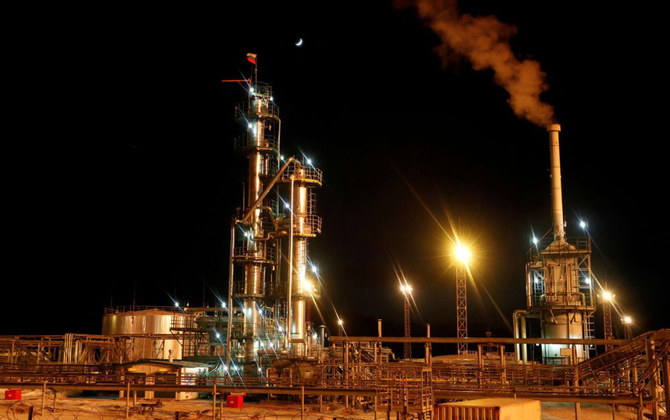How much Russian oil will continue to flow to Europe?

https://arab.news/mcuan
After weeks of difficult negotiations, European leaders have agreed to ban most imports of Russian crude and petroleum products by the end of this year.
The ban will affect only seaborne oil, which accounted for about 65 percent of Russian supplies. Imports via the Druzhba oil pipeline have been exempted, but a number of the EU members will independently abandon it. The head of the European Commission expects the sixth package of EU sanctions against Russia to immediately impact 75 percent of Russian oil imports, and by the end of the year 90 percent of the Russian oil imported by Europe will be banned.
According to S&P Global, total exports of Russian oil and petroleum products to the EU at the end of 2021 amounted to 4.5 million barrels per day, of which crude oil represents about 3.2 million bpd. Seaborne supplies account for about 65 percent of this volume, another 35 percent falls on the Druzhba pipeline.
The Druzhba pipeline consists of several branches, the total length of which makes it the longest in the world. It connects fields in Western Siberia with refineries, ports and storage facilities in Eastern and Western Europe. Through the territory of Belarus, oil goes through it to Poland, Germany and the Baltic countries (northern branch), and through the territory of Ukraine — to Hungary, Slovakia and the Czech Republic (southern branch).
Countries along the northern branch have the opportunity to receive oil by alternative routes, since they have access to the sea. But Hungary, Slovakia and the Czech Republic are deprived of such an opportunity, so their dependence on Russian oil is higher. It was these countries, especially Hungary, that opposed the European ban of Russian oil, since for them a change of supplier is very expensive in terms of time and investment.
A lighter version of the embargo, which excludes a ban on imports through the Druzhba pipeline, could suit everyone in the EU. In total, five European countries receive Russian oil by land; Poland, Germany, Hungary, Slovakia and Czech Republic.
Hungary, Slovakia and the Czech Republic, most likely, will not be able to significantly reduce the volume of imports this year. But Germany and Poland announced that they would completely abandon Russian oil by the end of 2022, including that supplied through Druzhba. If the situation develops in this way, then by the end of the year only 290,000 bpd will remain of Russian exports to the EU — just the same 10 percent that the head of the European Commission spoke about.
However, in practice, the ban of pipeline supplies may be more difficult. For example, the German Schwedt refinery is 100 percent dependent on Russian oil. An alternative to the Druzhba pipeline may be oil from the ports of Rostock and Gdansk in the Baltic, but this means a change in grade and increase in transportation costs. In addition, it will be necessary to look for a supplier, conclude long-term contracts, clean and reconfigure the refinery for a new crude composition, form new logistics chains, and eliminate bottlenecks. At each stage, there may be complications that may require more time to resolve.
Seaborne oil is delivered from Russia to the EU through ports in the Baltic, the Black Sea and the Arctic. In total, about 2-2.2 million bpd go through them. According to Bloomberg, an increasing number of oil tankers are leaving Russian ports without a specific destination. This oil could informally enter the EU in one way or another, which would partially offset the effect of the ban.
It is now difficult to make a reliable assessment of how much Russian exports to the EU will actually decline. This will depend on the political situation, on the availability of alternative suppliers and on how successful Russian oil companies are in rerouting oil to Asia. Such a global task of rerouting of oil flows may take much longer than European politicians intend.
Probably, only Poland, which has the strongest political support for such a decision, will be able to completely abandon pipeline oil. Germany may retain by the end of the year about 50 percent of pipeline imports from Russia, while the countries of Eastern Europe will continue to buy oil through the Druzhba pipeline in full. This means that out of 1.1 million bpd pipeline oil, a little more than 600,000 bpd will remain by the end of the year.
Seaborne oil could be cut by 60 percent to 70 percent, depending on how well Russia can manage to bypass the EU ban. This means that by the end of the year, 0.8-1 million bpd of Russian oil may still flow to the EU by sea. In aggregate, Russian oil exports to the EU may lose more than half of the 3 million bpd and be at the level of 1.4-1.6 million bpd by the end of 2022.
This is a rough scenario that is influenced by a large number of different factors, but the main idea is that the European oil ban does not pose a vital threat to the Russian oil and gas industry as prices are expected to remain high.
For Russia, the main question now is how quickly it will be possible to redirect oil flows from west to east. So far, at least, there are no problems with Asia: China and especially India are now buying Russian oil at a record pace and volume. Other major Asian economies, especially Indonesia, Vietnam and Thailand, also look very promising.
While, Europe will be seeking much more seaborne crude from outside Russia. Europe is now increasingly looking at more supply from the UK and Norway’s North Sea crude, the US, and West African producers.
Indeed, the Ukrainian crisis and the sanctions from the West that followed upended the entire global oil supply chain. The oil market is now witnessing one of the most significant rerouting of oil flows in recent decades, which may change the global oil trade routes forever.










































